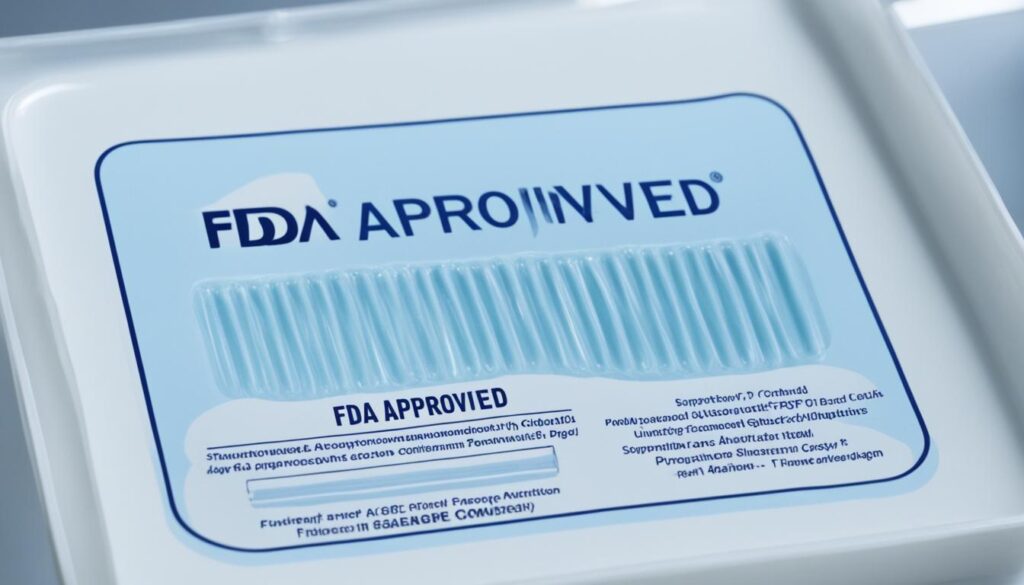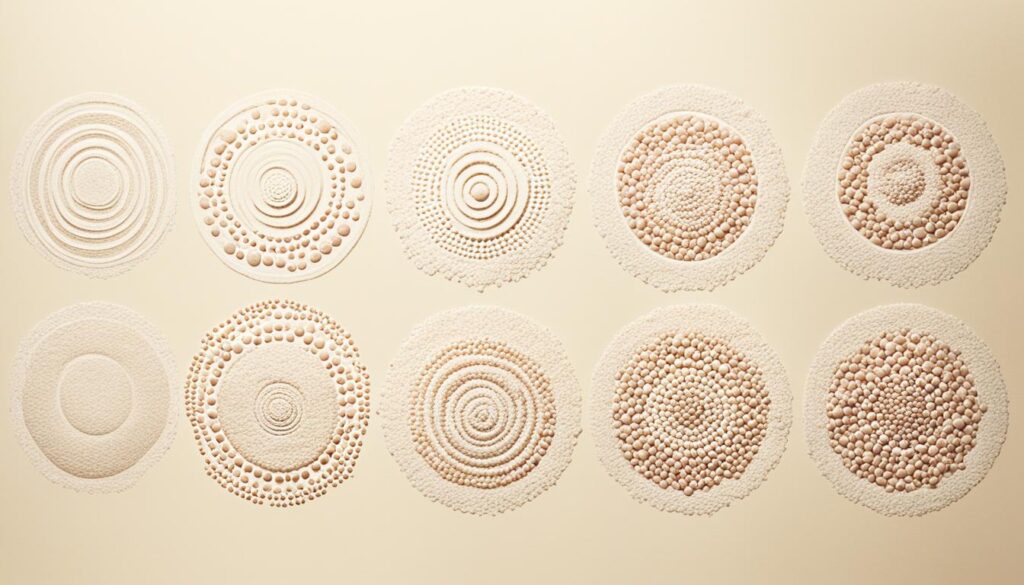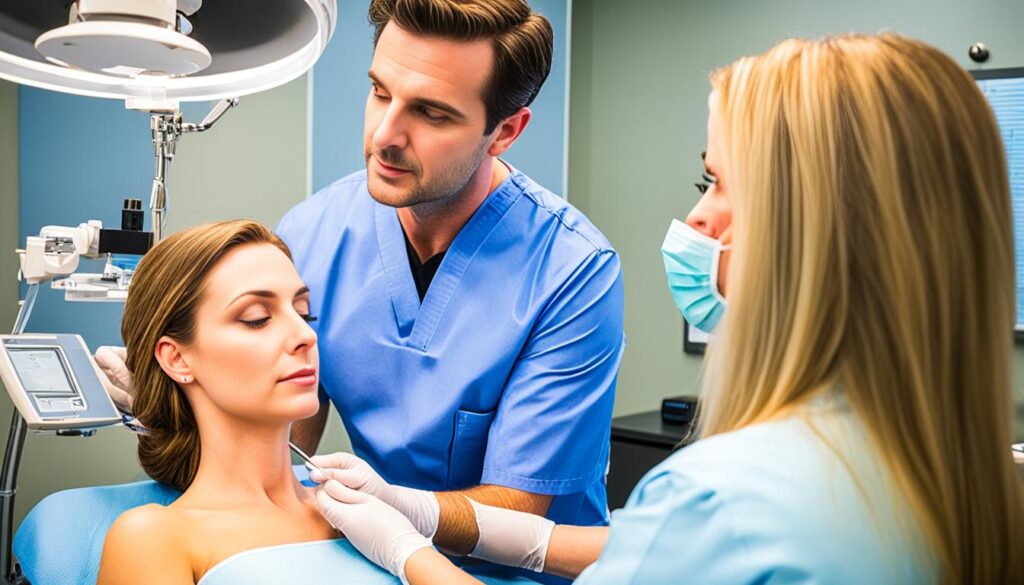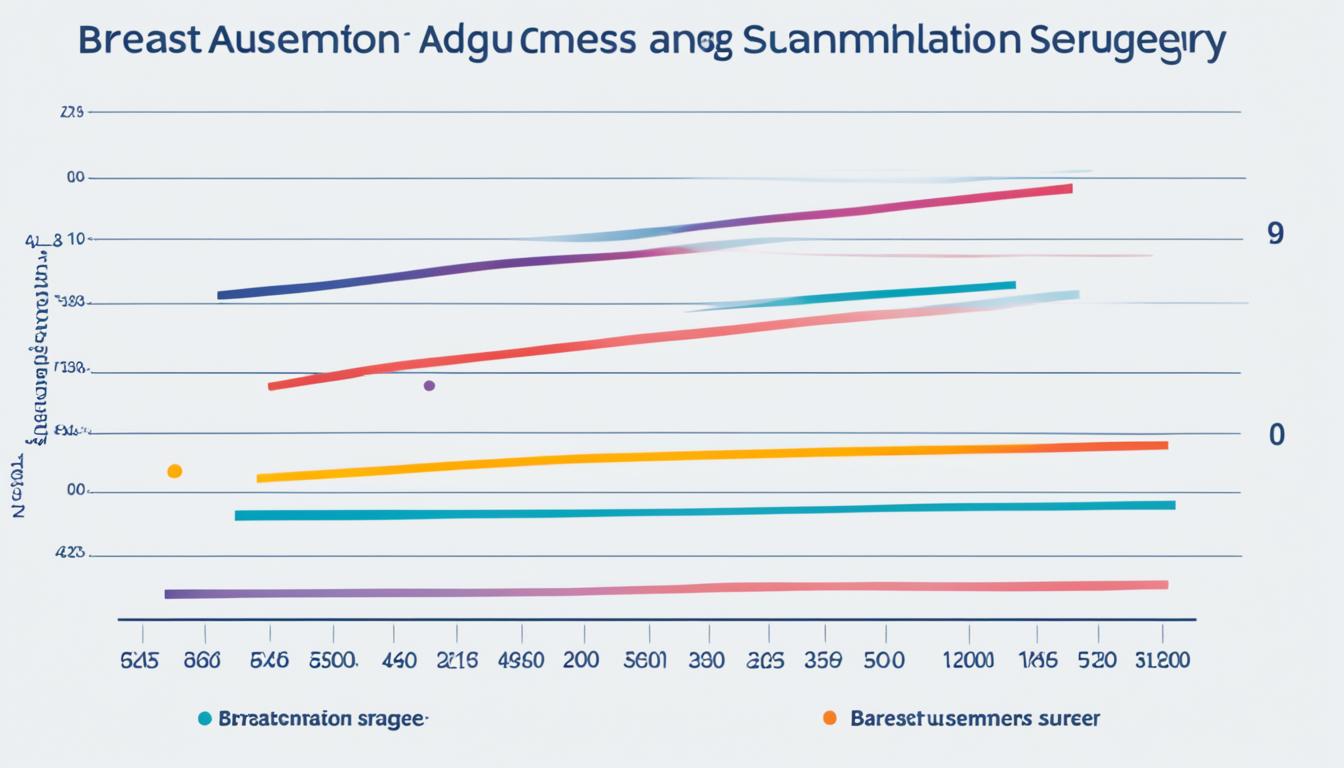During my youth, I felt pressured to meet beauty standards. This led me to think about changing my looks. The thought of breast enlargement surgery made me both nervous and curious. It’s a big step that needed careful consideration on my part.
The American Society for Aesthetic Plastic Surgery reports breast augmentation is quite common. In 2011, there were about 320,000 surgeries done. Of these, those under 18 made up 1.5%. The U.S. Food and Drug Administration (FDA) says women can get saline implants at 18 and silicone ones at 22. Yet, the decision ultimately depends on the surgeon, who may allow younger patients with good reasons.
Key Takeaways
- Saline breast implants are for 18-year-olds and older; silicone is for 22 and up.
- Age rules for breast surgery are flexible, with attention given to maturity.
- In 2011, under 18 surgeries made up only 1.5% of the total.
- It’s important that young patients understand what surgery involves.
- Parents and teens must both agree on the surgery for it to happen.
Understanding Breast Augmentation for Adolescents
When thinking about adolescent breast augmentation, it’s key to look at breast growth. Girls usually start developing around 11 (but it can be as early as 8 or as late as 13). Growth often finishes by 15, but can last until age 18. This broad timing covers both the physical and emotional stages of growth in teens.
Breast Development and Physical Maturity
Teens often compare their bodies to friends and what they see in media. They might change how they dress or their hair, or struggle with eating disorders. Studies show a link between looking up to celebrities and being open to cosmetic surgery in college-aged young women.
Psychological and Emotional Considerations
Teenagers face a lot of psychological and emotional challenges. For them, the choice to get breast augmentation can be big and affect their self-esteem. It’s really important to pick the right patients and make sure they fully agree. This process helps get the best results for adolescent breast augmentation.
Societal Influences and Body Image
The media and society have a big effect on what teens think about their bodies. They can get a lot of pressure and have strong desires for teenage breast surgery. Talking about these issues before surgery is very important. It helps patients understand their feelings and make a choice that fits their level of growth – both physically and emotionally.
Regulatory Guidelines and Age Requirements
When we talk about breast augmentation surgery, we look at rules from the FDA. The FDA says women 18 and older can use saline implants. Women 22 and older can use silicone implants. These rules are to keep patients safe and make sure they are old enough for the surgery.
It’s key to understand that age limits don’t apply when implants are used for breast reconstruction. This shows the FDA understands that some surgeries are needed for health reasons. For example, after a mastectomy or if someone has serious health issues with their breasts.
Following these breast implant rules helps surgeons care for their patients properly. It means young patients get the right information to make wise choices. So, the rules help everyone by ensuring safety and good ethics in the breast enhancement field.

What is the minimum age for breast enlargement surgery?
No legal age requirement exists for breast augmentation. Professional plastic surgeons look at the FDA’s advice. They check everything in a first meeting. This includes a health check and an evaluation of the person’s body and mind maturity. They do this to decide if getting breast augmentation is a good idea.
Surgeon’s Discretion and Patient Evaluation
The FDA has allowed use of saline implants for those 18 and up, and silicone for those 22 and up. Even so, many surgeons won’t do it for those under 18. They do this by looking at how ready and mature the patient is. They see if the patient can think carefully about their decision.
Parental Consent for Minors
For those under 18, their parents must agree before the operation. This makes sure the patient has their family’s full agreement. In the case of breast reduction surgery, this is also the rule. It helps teenagers, but again, parents must agree if the patient is under 18.
Factors to Consider for Adolescent Breast Augmentation
When looking at young patients for breast augmentation, we check how developed they are physically. We also examine if they feel good about their body and handle emotions well.
How big someone is and their breast growth are key. Doctors often use the Tanner scale for breast growth. Stage V means the breasts are fully developed.
Stage of Development and Breast Maturity
It’s crucial to wait for full breast growth before thinking about surgery. Doing it too early can stunt natural growth and lead to issues later.
Emotional Maturity and Realistic Expectations
Teens must be old enough to understand breast surgery and its risks. They should be clear about what they want and not feel pressured by friends or what they see online. This helps avoid being unhappy with the results.
Motivation and Goals for Surgery
Understanding why a patient wants surgery is crucial. Doctors must make sure the decision is the teen’s own and not because others push them. Knowing the patient’s real reasons helps improve the outcome.

Assessing Readiness for Breast Implants
When figuring out if someone is ready for breast implants, especially teens, we look at a few things. We check if the body has fully developed and also see how the patient feels about themselves. These checks are important to make sure the surgery works out well.
Physical Maturity Markers
Looking at when the patient’s shoe size last changed can show us a lot. A study in the National Institutes of Health suggests that if a patient’s shoe size stayed the same for two years, they might be physically mature in many ways.
Body Image and Self-Esteem
Besides body changes, how the patient sees themselves is vital too. If a young person is unhappy with a body part and surgery could make them feel better, it might be a good choice. This process could boost their confidence and happiness.
| Statistic | Value |
|---|---|
| Breast augmentation procedures in 2011 | Nearly 320,000 |
| Adolescents under 18 years old accounted for | 4,830 (1.5%) of the procedures |
| Breast development starts at | 11 years (range, 8–13 years) |
| Breast development is complete by | 15 years (range, 11–18 years) |
By checking on a patient’s physical and emotional well-being, doctors can better decide if they should get breast implants. This approach aims to ensure the best outcome for these unique patients.

Breast Augmentation for Deformities and Asymmetry
Breast augmentation helps with major breast differences in size or shape. It is beneficial for those with uneven breasts, tubular breast deformity, or Poland syndrome. This surgery brings balance and symmetry back to the breasts.
Surgeons use breast implants to make the affected breast look better. This makes the breasts more even and attractive. It is a great option for people with noticeable breast issues. Such problems can really affect how a person feels about themselves.
Choosing to have breast augmentation for deformities or asymmetry is important. A qualified plastic surgeon should carefully assess the patient’s health and goals. This evaluation helps decide the best surgery plan.
Breast surgery for asymmetry offers a chance for better-looking breasts. It may enhance the patient’s happiness and confidence. This surgery is life-changing for those dealing with significant breast differences.
Preoperative Counseling and Informed Assent
Talking to teenage patients before surgery is key. They need to fully understand what getting breast augmentation means. Doctors must talk about the reasons behind it and the possible outcomes. This includes explaining the surgery’s dangers and problems, and what to expect during recovery from breast implant surgery.
Addressing Motivations and Expectations
It’s vital to know why a patient wants a breast enhancement. And to make sure they know what is realistic after the surgery. Many teens are affected by what friends and the media say. It’s part of the talk doctors have with them.
Risks, Complications, and Recovery Process
Patients need to understand the possible problems of the surgery. These can be right after, like infections, or over time, like rippling or moving implants. They also need to know how long it’ll take to get better and what activities they can do after.
Discussing the reasons, what to expect, and the surgery’s issues is crucial. It helps patients, especially teens, to decide wisely about breast augmentation.
Alternatives to Breast Augmentation for Teens
Some teenagers might not be ready for breast augmentation. They can try non-surgical options at first. Padded bras or special shapewear can make the bust look bigger. This is a safe way to test out a fuller look without surgery’s risks or lifetime commitment.
Non-Surgical Options
There are many non-surgical choices for breast improvement. Special bras, enhancers, and shapewear can help. They give the illusion of bigger, rounder breasts. It’s a good first step for teens not ready for surgery yet.
Delaying Surgery for Physical and Emotional Maturity
Sometimes, holding off on breast surgery is wise. Breasts keep growing during the teenage years. Emotional readiness is vital too. Waits to be more mature physically and emotionally lessen surgery risks. This approach aims for the best result.
| Alternatives to Breast Augmentation for Teens | Advantages | Disadvantages |
|---|---|---|
| Non-Surgical Options (Padded Bras, Shapewear) |
|
|
| Delaying Surgery for Physical and Emotional Maturity |
|
|
It’s important for teenagers to explore all their options. It lets them find what’s right without harming their health. When thinking about breast augmentation, getting advice from experts and support from family is key.
Choosing the Right Surgeon for Adolescent Breast Augmentation
Looking into adolescent breast augmentation? It’s vital to pick a board-certified plastic surgeon who knows what they’re doing. They should have a lot of experience. Also, make sure their facility is top-notch.
Board Certification and Experience
Selecting a board certified plastic surgeon for your teen’s breast implants is a must. These professionals have passed tough tests. They show they’re skilled, especially in surgeries for young people.
Find a surgeon known for getting good results. They should understand the special needs of young patients.
Facility Accreditation and Safety Standards
The place where your teen’s surgery happens is crucial, too. It should be an accredited facility. This means it follows the latest safety rules for surgeries like this. You can rest easier knowing your teen is in good hands.
State laws can be misleading. They let any doctor say they’re a “plastic” or “cosmetics” expert, even without surgery training. So, do your homework on the surgeon. Make sure they’re genuinely skilled in adolescent breast surgeries.

Ethical Considerations and Parental Involvement
Discussing teen breast augmentation is critical from an ethics viewpoint. Doing breast enlargement surgery on teens for looks only needs careful thought. It’s hard to find situations where the teen fully agrees and looks after themselves. Deciding involves thinking about what the parents and teen say very closely.
The American Academy of Pediatrics stresses how important it is for young people to join in informed assent. This is about making sure kids get the procedure. They need to know about the risks and what the recovery looks like before their surgery.
Thinking about ethical considerations for teen breast augmentation is key. Making sure parents are really involved in deciding on breast implant surgery is also important. This helps protect the health of these young patients. Doctors can make sure everything goes well by focusing on these key points.

Conclusion
I’ve looked at the issue of the minimum age for breast enlargement surgery from many angles. I think breast augmentation can be right for certain young patients. But, it’s critical to check if they are physically and emotionally ready. Also, if they have realistic expectations. It’s essential that parents and the patients themselves agree to the surgery. And, the doctors must follow the rules while putting the patient’s health first.
Doctors play a key role in making sure the surgery brings good results. They should tailor their advice depending on each patient’s situation. So, there’s no fixed age for when it’s okay to have breast enlargement surgery. Every case is unique. Surgeons use their expertise, following strict guidelines. But always focusing on what’s best for their young patients.
Deciding whether to have breast augmentation is a very personal choice. It calls for a detailed, careful process of thinking through all the aspects. With the correct care, surgery can have a big positive impact for some young people. But this decision must not be taken lightly. It requires a lot of thought and care.
